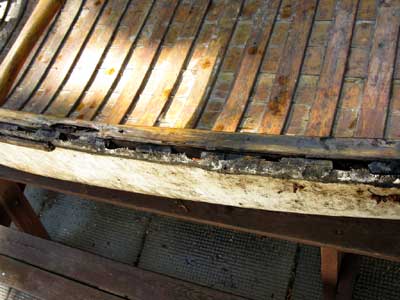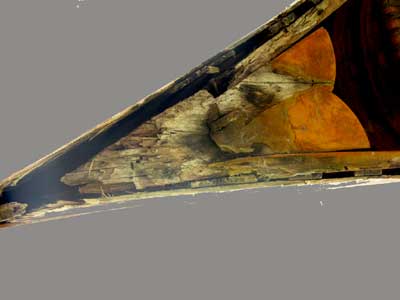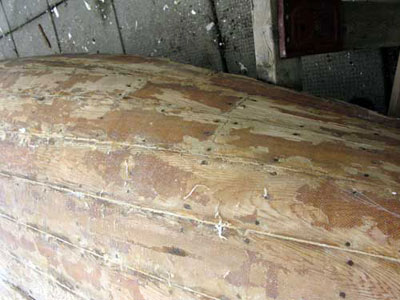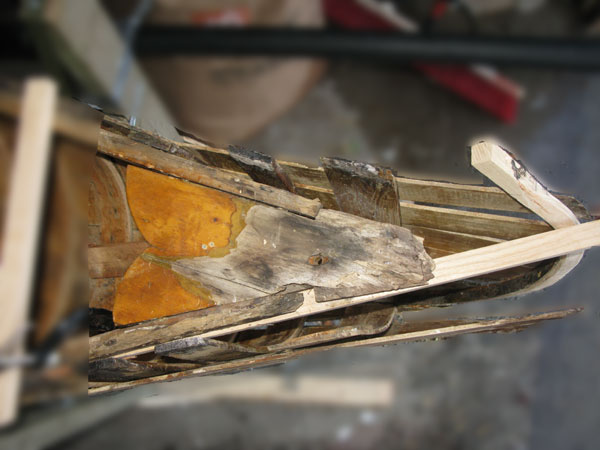Tedp
canoe tripper
Number one of many posts as this is my first attempt at a restoration. I've spent a lot of hours searching and reading this forum so I now have ideas but will need some hand-holding. This is a Great forum and am a bit overwhelmed by the expertise and the skills.
I think it is a Bastien Huron in so-so shape. It's 14'x35"x13"deep, fiberglassed and was laying in the dirt in my neighbours yard when I given it.
I've stripped off the glass with a heat gun and two scrapers.
I'm in the middle of heating and scraping off the extra poly resin.
Question #1. The planks have wood filler in between, most of it in fairly good shape. Was told that filling was done to stop the excess resin from getting inside during fiberglassing. I want to canvas. The fiberglass was waterproof. Canvas is not so the planks will swell. So do I need to remove 250 linear feet of wood filler. If yes, just lengthwise or between the plank butts as well?




cheers and thanks,
ted
I think it is a Bastien Huron in so-so shape. It's 14'x35"x13"deep, fiberglassed and was laying in the dirt in my neighbours yard when I given it.
I've stripped off the glass with a heat gun and two scrapers.
I'm in the middle of heating and scraping off the extra poly resin.
Question #1. The planks have wood filler in between, most of it in fairly good shape. Was told that filling was done to stop the excess resin from getting inside during fiberglassing. I want to canvas. The fiberglass was waterproof. Canvas is not so the planks will swell. So do I need to remove 250 linear feet of wood filler. If yes, just lengthwise or between the plank butts as well?




cheers and thanks,
ted


